Imagine a dish that combines the exotic allure of Thai flavors with the comforting warmth of a homemade meal. Panang Curry is a vibrant, aromatic curry that dances on your palate with every bite. This recipe will guide you through creating a culinary masterpiece that's as pleasing to the eye as it is to the taste buds. Keep reading to uncover the secrets to this delightful dish and bring a taste of Thailand into your kitchen.
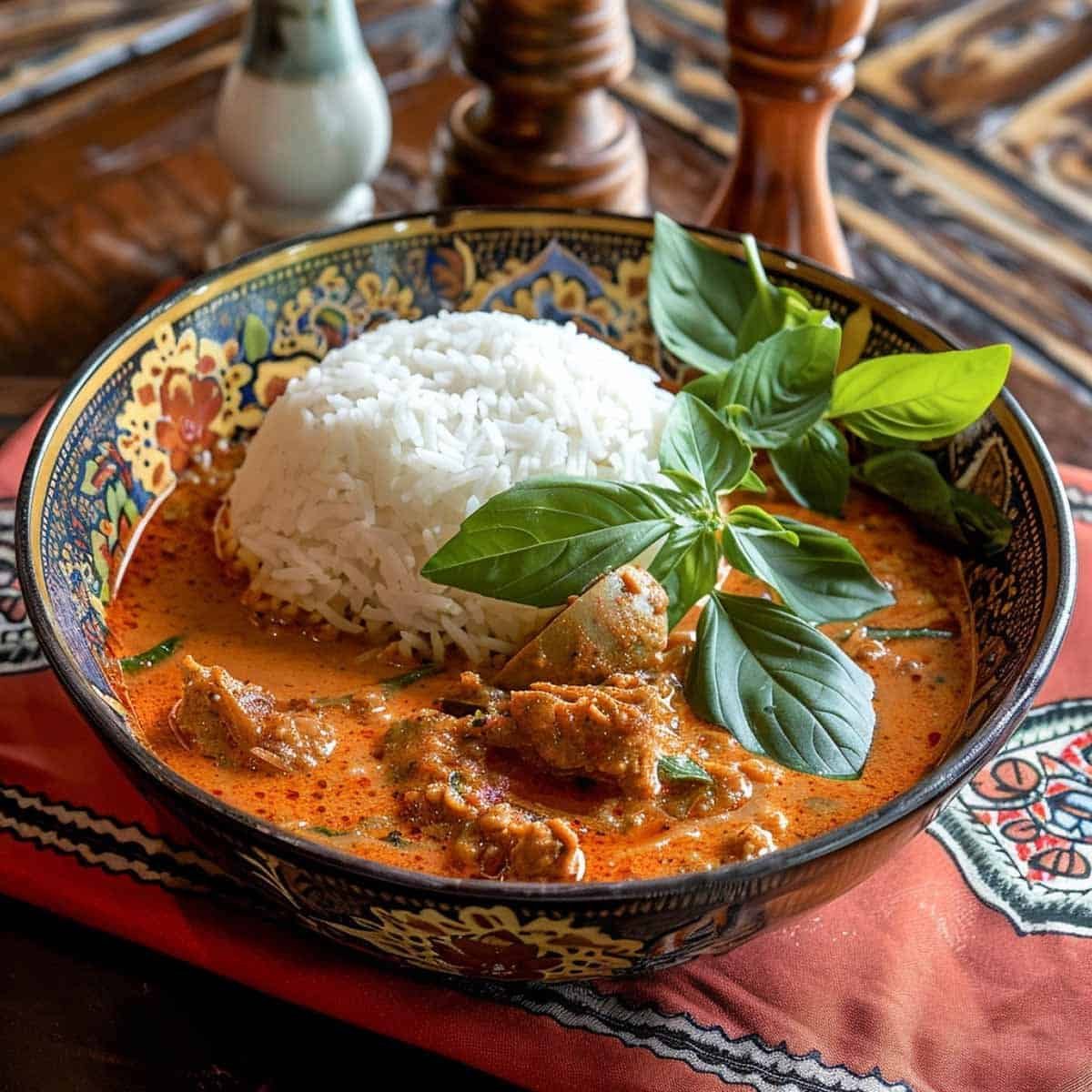
Background and Influence of Panang Curry
Panang Curry, with its roots in Central Thailand, has a rich history and cultural significance. This dish, Phanaeng, is a milder, more decadent curry than its Thai counterparts. Traditionally made with beef or chicken, it incorporates ingredients like kaffir lime leaves and coconut milk, which are integral to Thai cuisine. Panang Curry's origin dates back to the 19th century and reflects the region's culinary influences, including the use of Indian spices introduced by traders. Its distinct flavor profile has made it a favorite in Thailand and worldwide, showcasing Thai cuisine's global appeal.

Sawasdee Kha, and Hello
I'm thrilled to share my beloved panang curry recipe. Growing up, the aroma of Curry simmering on the stove would fill our home, signaling that a comforting, delicious meal was coming. The rich, creamy sauce, tender chicken, and fresh vegetables create a perfect flavor harmony that always brings back cherished memories of family dinners.
I love how this dish looks as it cooks—the vibrant colors of the bell peppers and snap peas contrast beautifully with the golden Curry. The smell is intoxicating, with the fragrant blend of spices and coconut milk wafting through the kitchen. And the taste? It's a delightful balance of spicy, sweet, and savory, with each bite offering a burst of flavor and a creamy, satisfying texture.
I can't wait for you to try this recipe. It's a joy to make and even more delightful to share. Please give it a go and let me know how it turns out. Your feedback and shared experiences mean the world to me.

Welcome! I'm So Glad You're Here. Join Me In Making Panang Curry , Together—It's Going To Be Delicious!
Fresh Essentials for a Flavorful Feast Ingredients
To create a truly authentic Panang Curry, you'll need a blend of fresh and flavorful ingredients. Key components include Panang curry paste, which is the heart of the dish, providing its distinct taste. Coconut milk adds a creamy, luscious texture, while fish sauce and palm sugar balance the flavors with savory and sweet notes. Fresh vegetables like bell peppers and snap peas add vibrant color and a delightful crunch. And don't forget the kaffir lime leaves and Thai basil, which infuse the Curry with their aromatic essence, making each bite a sensory delight.
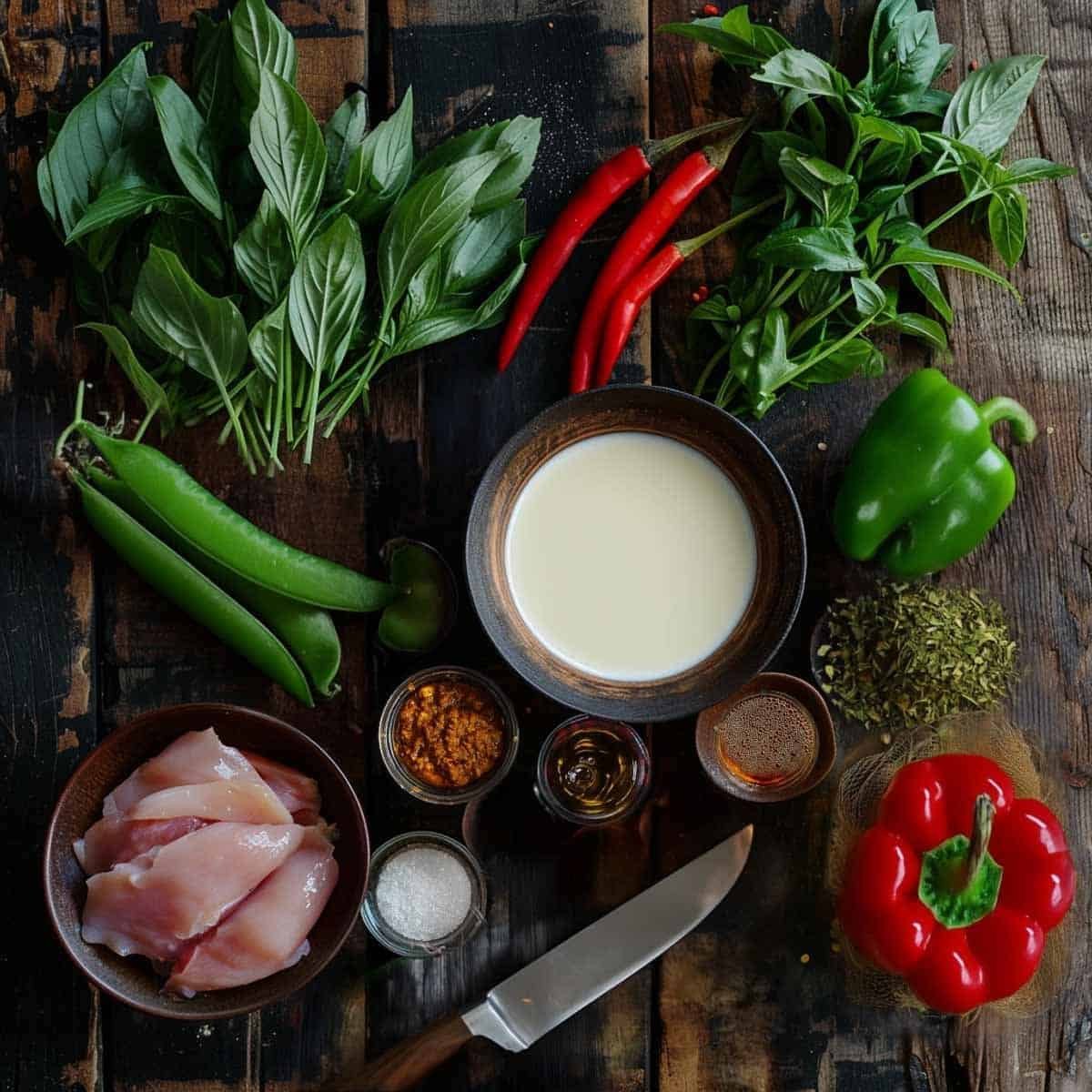
Prep for Culinary Perfection
Start by gathering and preparing all your ingredients. Thinly slice the chicken breast, and cut the red and green bell peppers into strips. Tear the kaffir lime leaves to release their aromatic oils. Having everything prepped and ready to go will make the cooking process smooth and enjoyable, allowing you to focus on creating a delicious Panang Curry without any interruptions.
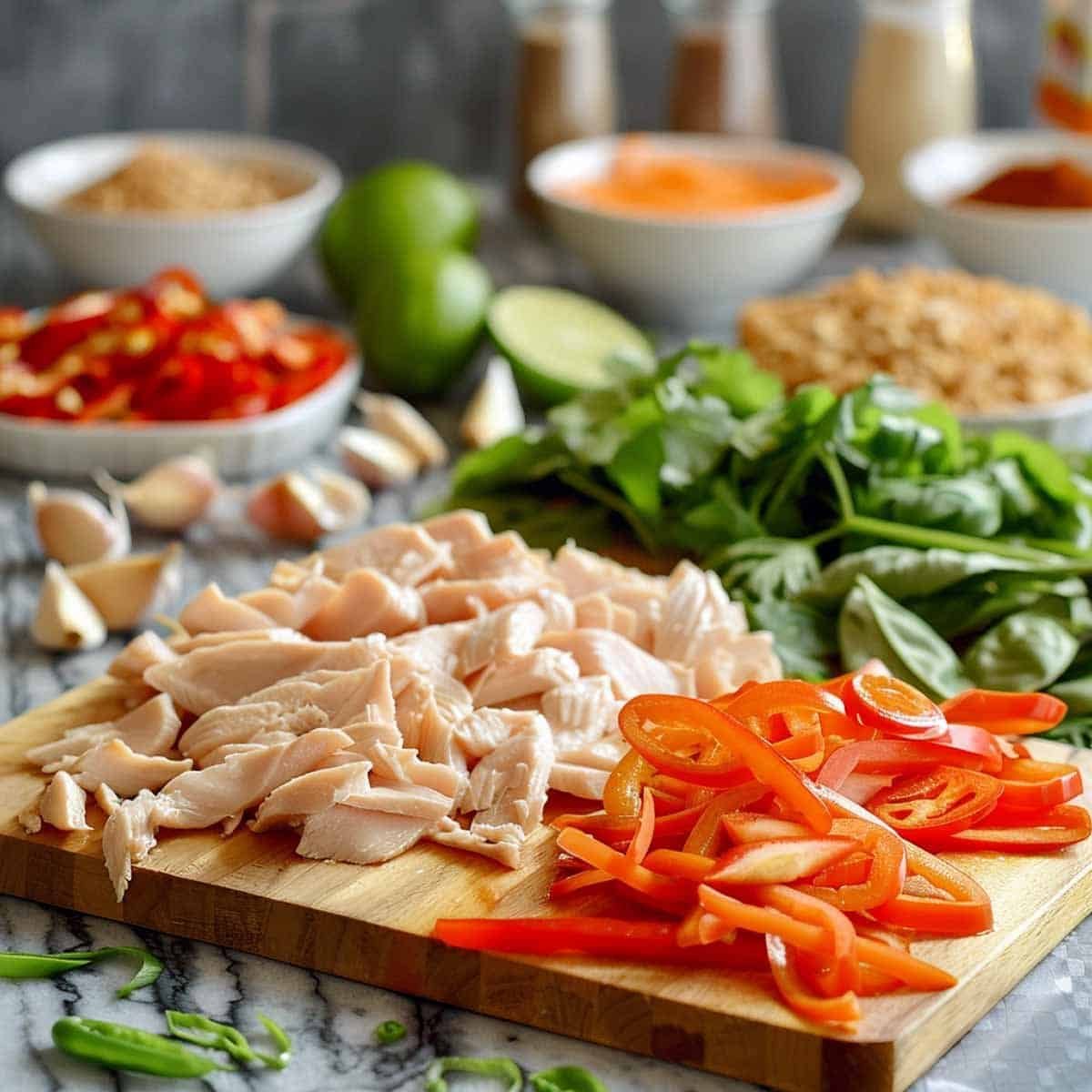
Infuse with Coconut Milk and Simmer to Perfection
Heat the vegetable oil in a large pan or wok over medium heat. Stir the Panang curry paste constantly for 2-3 minutes until it becomes fragrant and slightly darker. This step is crucial as it awakens the spices in the paste, creating a robust and aromatic foundation for your Curry. The aroma that fills the kitchen during this step is simply irresistible.
Pour the coconut milk and water, stirring well to combine with the curry paste. Bring the mixture to a gentle simmer. The coconut milk not only adds a creamy texture but also balances the heat of the curry paste, creating a rich and velvety sauce that will envelop the chicken and vegetables beautifully. Letting it simmer allows the flavors to meld together perfectly.
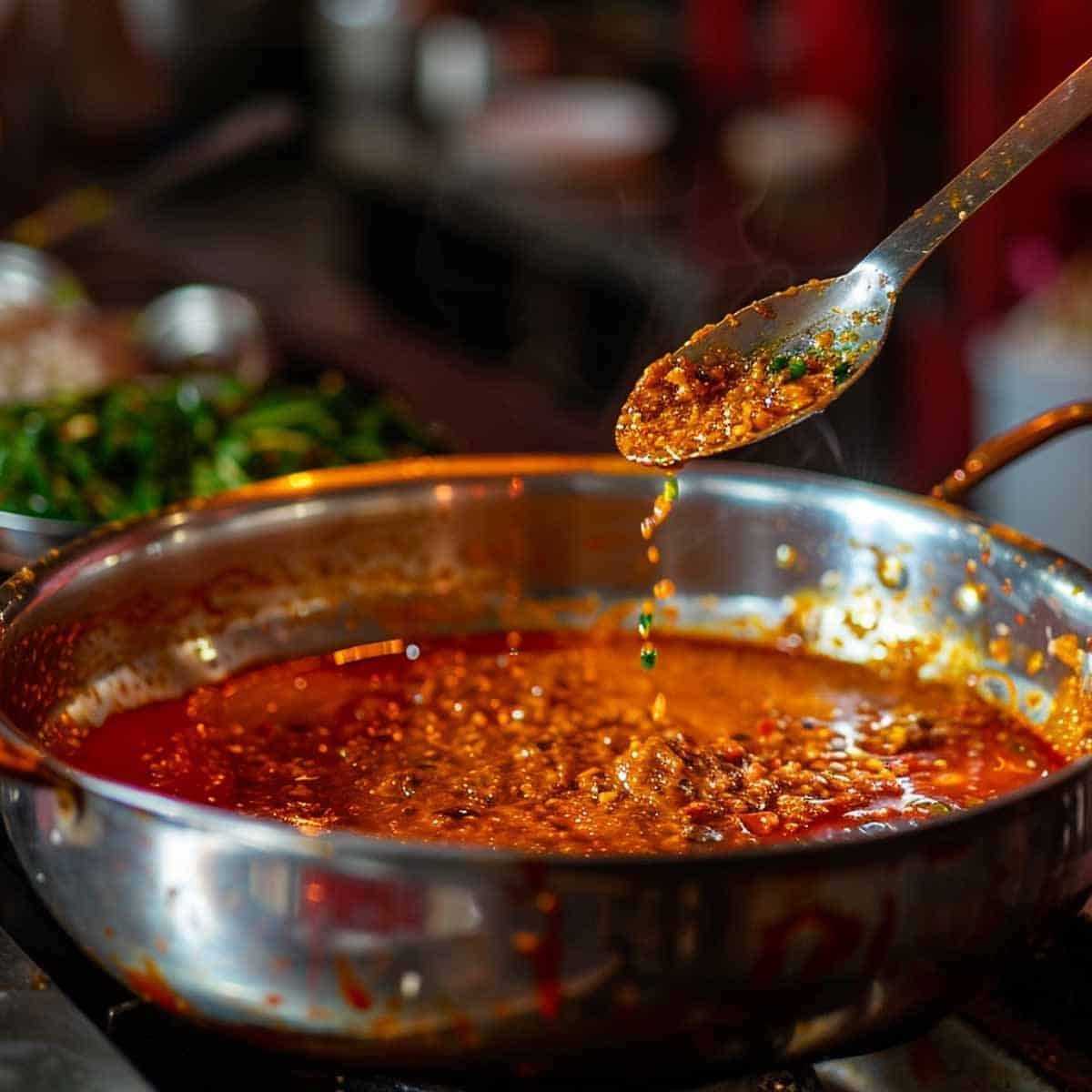
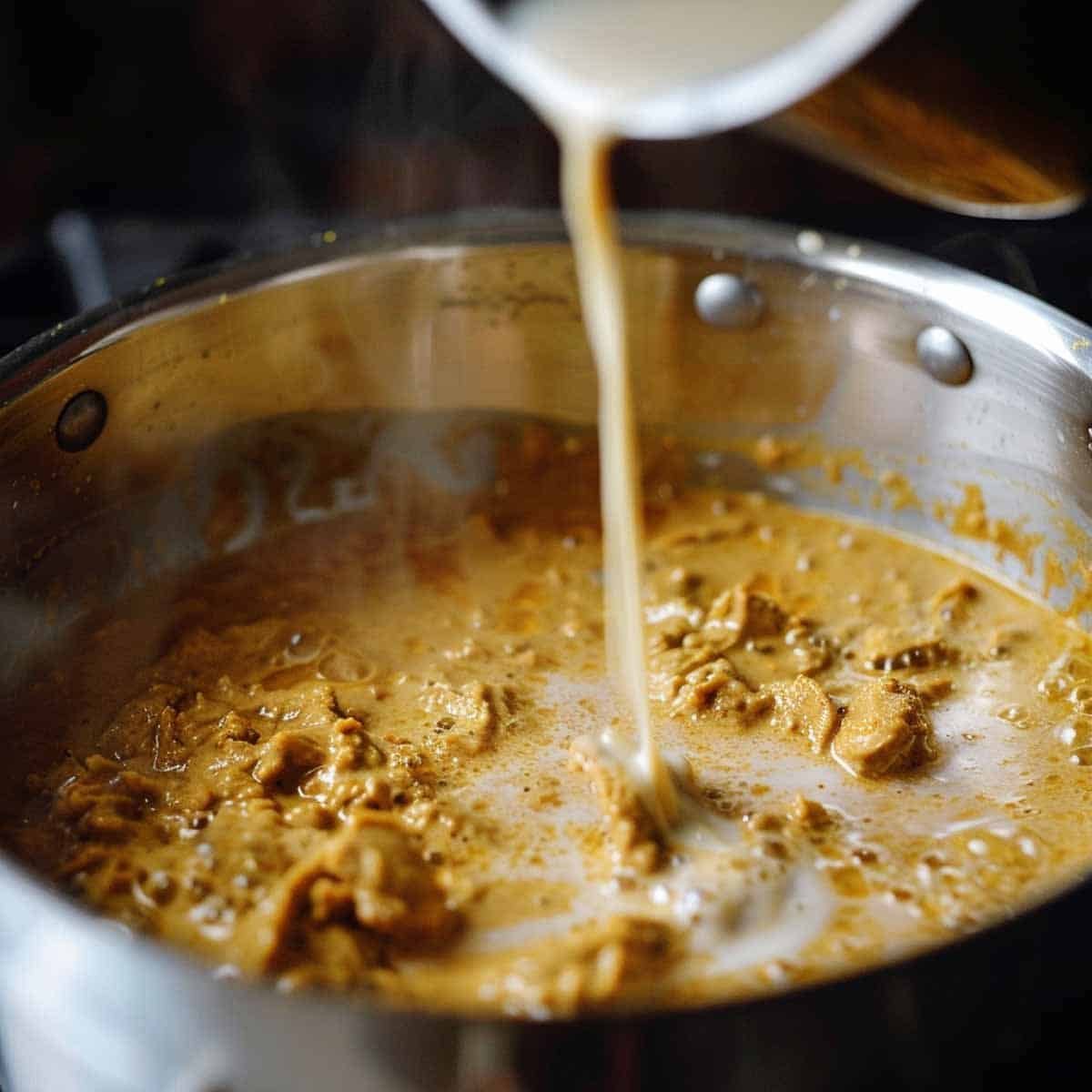
Combine Chicken and Colorful Veggies
Add the thinly sliced chicken to the pan, ensuring each piece is coated with the sauce. Simmer for about 10 minutes until the chicken is cooked through. Then, add the sliced bell peppers, snap peas, and torn kaffir lime leaves. Cook for an additional 5 minutes. This step ensures that the chicken is tender and the vegetables retain their vibrant color and slight crunch, adding to the dish's delightful texture.
Adjust the salt in the fish sauce and palm sugar to adjust to taste. These ingredients add depth and balance to the Curry, with the fish sauce providing a savory umami flavor and the palm sugar adding a touch of sweetness.
Finally, add the Thai basil leaves and stir everything. Let the Curry simmer for another 2-3 minutes to allow the flavors to meld together perfectly, creating a harmonious, complex, and comforting blend.
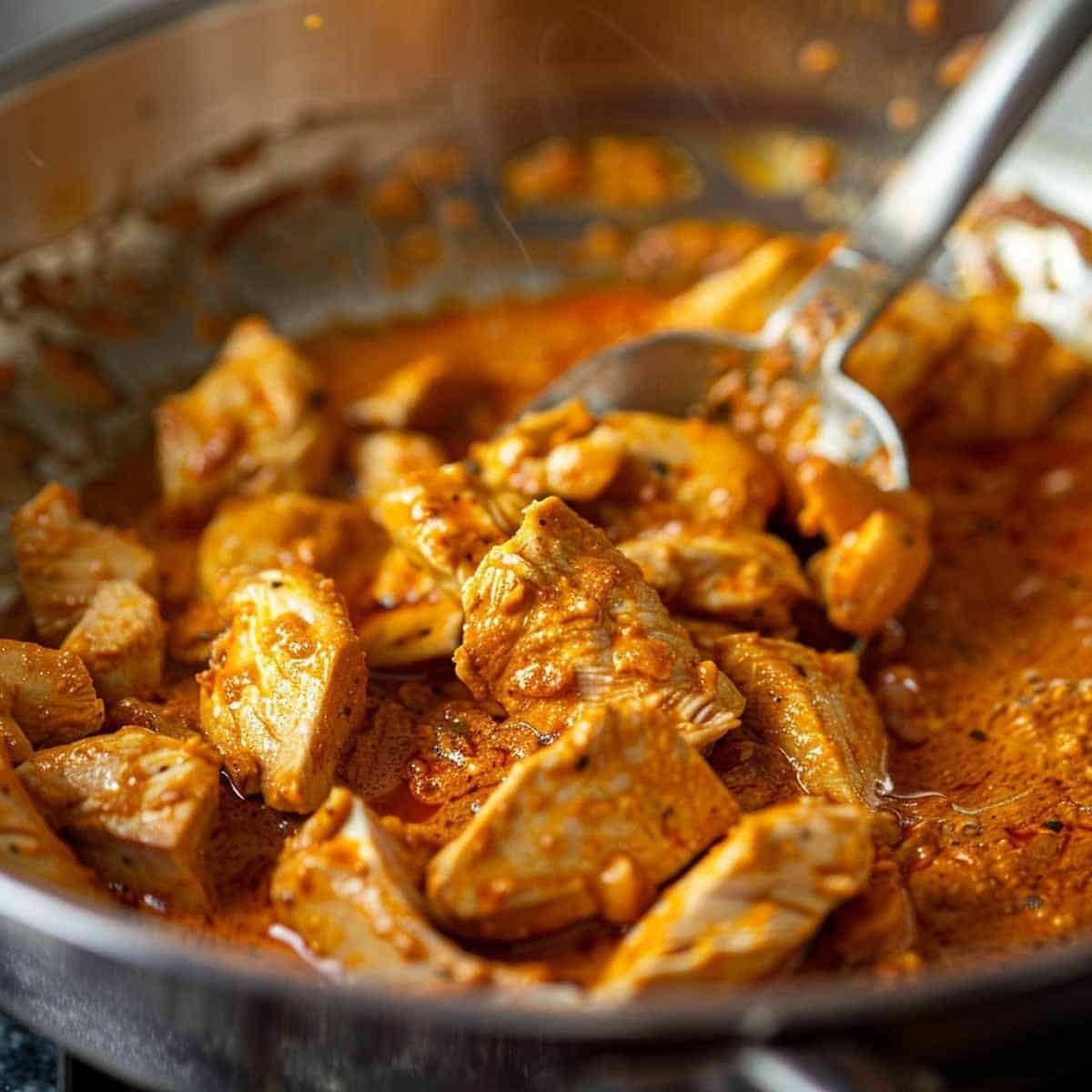
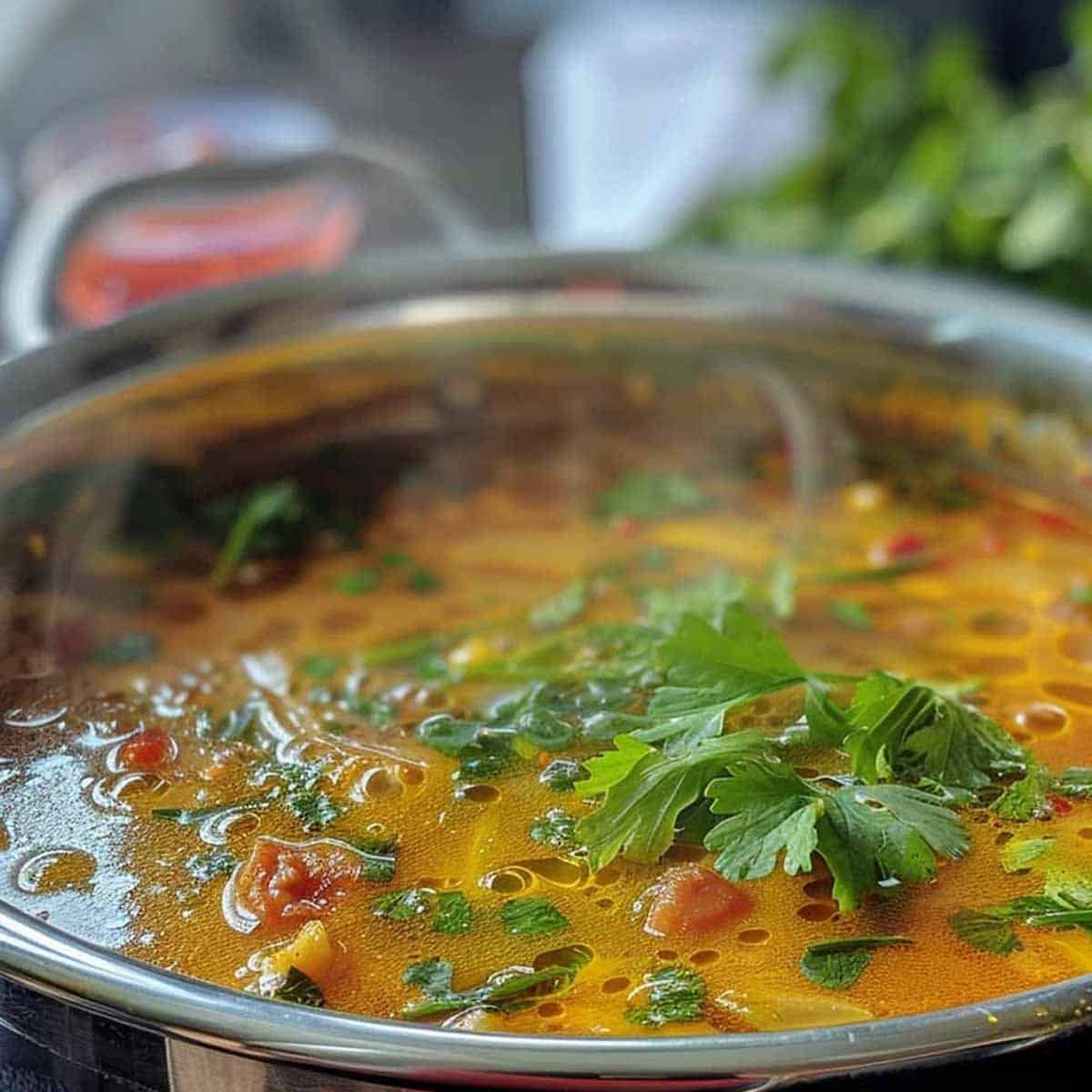
Present and Serve with Elegance
Serve the red curry hot over a bed of steamed jasmine rice, garnished with additional basil if desired.
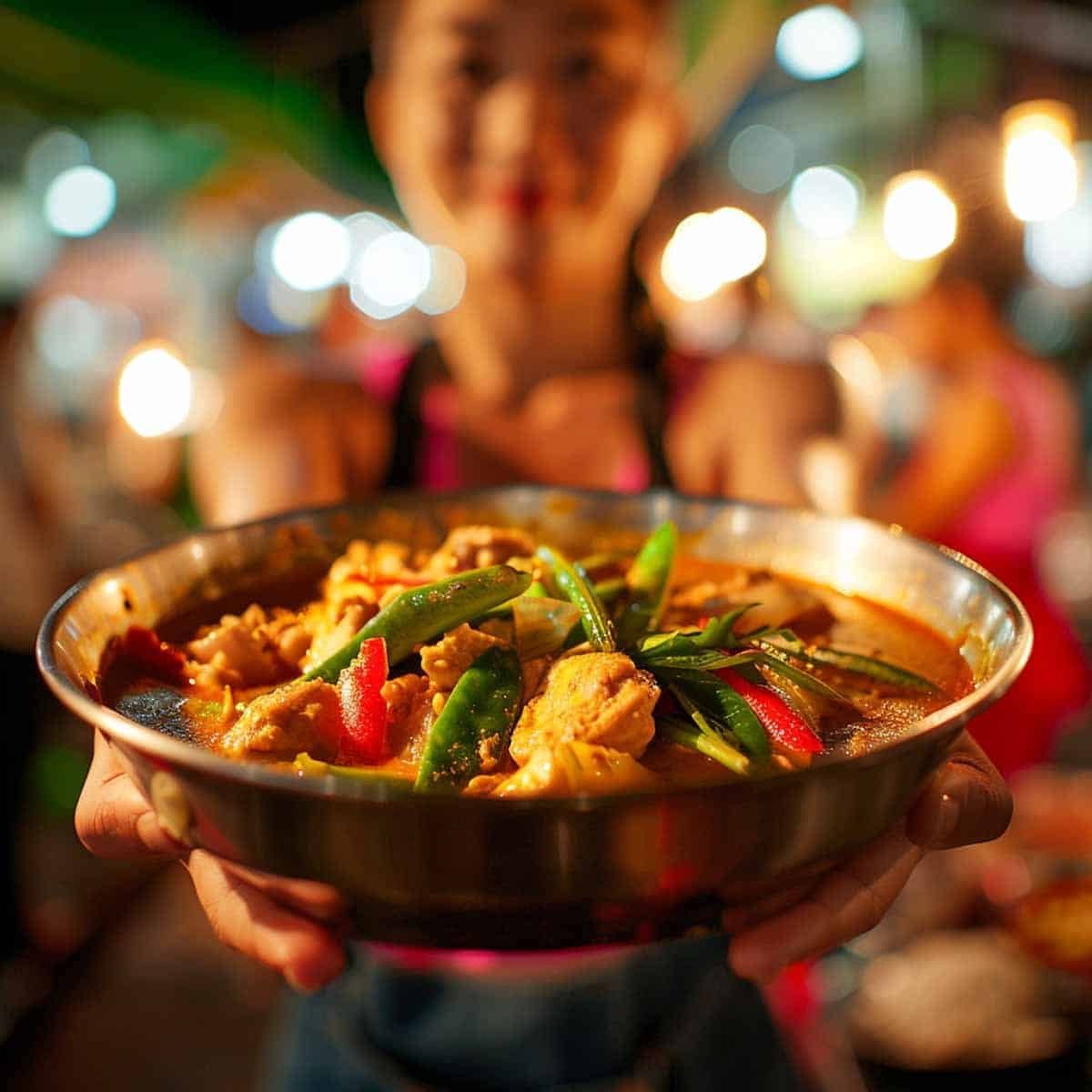
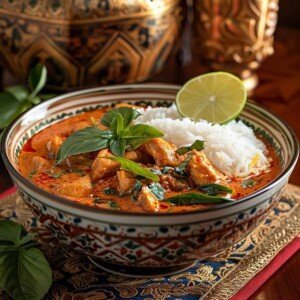
Panang Curry
Ingredients
- 1 lb chicken breast thinly sliced
- 2 tablespoon Panang curry paste
- 1 can 13.5 oz coconut milk
- 1 cup water
- 2 tablespoon fish sauce
- 1 tablespoon palm sugar
- 1 red bell pepper sliced
- 1 green bell pepper sliced
- 1 cup snap peas
- 4-5 kaffir lime leaves torn
- ¼ cup Thai basil leaves
- 1 tablespoon vegetable oil
Instructions
- Prepare the ingredients in a warm, welcoming kitchen; the first step is to gather and prepare all the ingredients. Thinly slice the chicken breast and the red and green bell peppers. Tear the kaffir lime leaves to release their aromatic oils and prepare the snap peas, Thai basil leaves, and other ingredients for use. This step ensures a smooth cooking process, allowing you to focus on creating a delicious Panang Curry.
- Cook the curry paste. Heat the vegetable oil in a large pan or wok over medium heat. Add the Panang curry paste, stirring constantly for 2-3 minutes until the paste is fragrant and slightly darker. This step is crucial as it blooms the spices in the curry paste, unlocking their full potential and creating a flavorful base for the curry.
- Step 3: Add Coconut Milk and SimmerPour in the coconut milk and water, stirring well to combine with the curry paste. Bring the mixture to a gentle simmer. This is where the magic happens, as the creamy coconut milk melds with the aromatic curry paste, creating a rich and flavorful sauce that will coat the chicken and vegetables beautifully.
- Add Chicken and vegetables. Add the thinly sliced chicken to the pan, submerging each piece in the sauce. Simmer for about 10 minutes until the chicken is cooked through. Then, add the sliced bell peppers, snap peas, and torn kaffir lime leaves. Cook the vegetables for 5 minutes to keep their bright colors and slight crunch, adding delightful texture to the dish.
- Final Touches: Adjust the salt in the fish sauce and palm sugar to adjust to taste. The fish sauce adds a savory umami depth, while the palm sugar balances the heat with sweetness. Finally, add the Thai basil leaves and stir everything. Let the Curry simmer for 2-3 minutes to allow the flavors to meld together perfectly.
Notes
Nutrition
Tips for Authenticity and Customization For Panang Curry
Using Authentic Ingredients
To achieve the authentic taste of Panang Curry, it's essential to use traditional ingredients. Panang curry paste is the cornerstone of the dish, typically made with red chilies, lemongrass, galangal, and shrimp paste. Coconut milk is crucial for its creamy texture and subtle sweetness. Fresh kaffir lime leaves and Thai basil add distinctive, aromatic notes that define the flavor profile of the Curry. Fish sauce provides the necessary umami depth, while palm sugar balances the heat with sweetness. Using these authentic ingredients ensures that your Panang Curry will have the rich, complex flavors that make this dish a Thai classic.
Adjusting Spiciness and Flavors
Panang Curry's beauty lies in its balanced flavors, but you can easily change the spiciness and other elements to suit your taste. If you prefer a milder curry, reduce the amount of Panang curry paste or add extra coconut milk to temper the heat. On the other hand, for a spicier version, add fresh chili peppers or more curry paste. Additionally, adjust the sweetness by adding more or less palm sugar, and tweak the saltiness with fish sauce. Remember, the key is to taste as you go, ensuring each spoonful of curry is perfectly tailored to your palate.
Substitutions
Panang Curry can be easily adapted if you have dietary restrictions or preferences. For a vegetarian version, substitute the chicken with tofu or a variety of colorful vegetables like zucchini, carrots, and mushrooms. Use soy sauce or tamari instead of fish sauce to keep it vegetarian-friendly. You can use light coconut milk for a lighter version, though the Curry will be less creamy. If palm sugar is unavailable, brown sugar or honey can be substituted. These adjustments allow you to enjoy the rich flavors of Panang Curry while accommodating your dietary needs.
Alternative Garnishes
While traditional garnishes like Thai basil and kaffir lime leaves are fantastic, there are plenty of alternatives to explore. Fresh cilantro adds a burst of color and a slightly citrusy flavor that complements the Curry. Sliced red chili peppers can add an extra kick for spice lovers. A squeeze of fresh lime juice just before serving brightens the dish and balances the richness of the coconut milk. For a crunch, sprinkle some toasted peanuts or cashews on top. These alternative garnishes enhance the presentation and add exciting new dimensions to the flavor profile.
Panang Curry : Pairing, Serving, and Storage Tips.
Pairing Suggestions and Side Dishes
Side Dishes:
- Jasmine Rice: Its fragrant aroma and fluffy texture make it the perfect base to soak up the rich curry sauce.
- Cucumber Salad: Light and refreshing, this salad offers a crisp contrast to the creamy curry; additionally, it enhances the meal with its vibrant flavors and textures.
- Roti: This flaky, buttery flatbread is perfect for scooping up every bit of the delicious Curry.
- Thai Spring Rolls: Crispy on the outside with a fresh, veggie-packed filling, these rolls complement the rich flavors of Panang Curry; additionally, they provide a refreshing contrast to the dish.
Wines:
- Riesling: Its sweetness and acidity balance the spiciness of the Curry beautifully.
- Sauvignon Blanc: This wine's crisp, citrus notes complement the fresh herbs in the curry; likewise, it elevates the dish with its zesty brightness.
- Pinot Noir: Its light body and fruity notes pair well with the complex flavors of the curry; besides, its aromatic profile adds an extra layer of depth to the meal.
Beer:
- Leo Super: Its light, crisp profile refreshes the palate; moreover, it complements the rich curry perfectly.
- Singha: This classic Thai beer has a balanced flavor that pairs well with the spices; consequently, it enhances the overall dining experience.
- Chang: A slightly stronger beer that can stand up to the bold flavors of Panang Curry.
How to Serve
Panang Curry is best served piping hot, straight from the pan to the table. For an authentic touch, serve it in a large, shallow bowl, allowing the vibrant colors of the vegetables and the rich, creamy sauce to take center stage. Additionally, accompany it with steamed jasmine rice to soak up every drop of the delicious curry. Moreover, garnish with fresh Thai basil leaves and a few slices of red chili for an added pop of color and flavor. Consequently, this inviting presentation ensures that each bite perfectly balances flavors and textures.
Reheating Options
You can use a microwave or stovetop to reheat Panang Curry. If using a microwave, place the Curry in a microwave-safe dish, cover it with a microwave-safe lid or plastic wrap, and heat in 1-minute increments, stirring in between, until thoroughly heated. For stovetop reheating, pour the Curry into a saucepan and heat over medium-low, stirring occasionally, until it reaches your desired temperature. If the Curry has thickened too much, add a splash of water or coconut milk to loosen it up while reheating.
Make-Ahead and Storage
Panang Curry is an excellent make-ahead dish, as the flavors only deepen with time. Once cooked, let the Curry cool to room temperature, then transfer it to an airtight container. It can be stored in the refrigerator for up to 3 days or frozen for up to 3 months. To reheat, thaw overnight in the fridge if frozen, and follow the reheating instructions. This make-ahead approach is perfect for busy weeknights or meal prepping, ensuring you always have a delicious, homemade meal ready. Visit foodsafety.gov for more information.
Required Kitchen Equipment for Panang Curry
- Large Pan or Wok: Essential for cooking the Curry evenly and allowing enough space to stir all the ingredients.
- Sharp Knife: This is for slicing chicken and vegetables precisely and safely.
- Cutting Board: Provides a sturdy surface for preparing all the ingredients.
- Wooden Spoon: Ideal for stirring the curry paste and ingredients without scratching the pan.
- Measuring Cups and Spoons: To ensure accurate measurements for a perfectly balanced curry.
Tasting Notes Panang Curry
Visual:
To begin with, Panang Curry is a feast for the eyes. The dish presents a vibrant tapestry of colors, with the creamy, golden-brown curry sauce serving as a luscious backdrop for the bright red and green bell peppers and vivid snap peas; in addition, the appealing presentation invites everyone to savor the meal. Furthermore, the tender chicken pieces and fresh Thai basil leaves add visual depth and contrast, making the dish look both appetizing and beautiful. Moreover, the torn makrut lime leaves sprinkled on top further enhance the visual appeal, providing a touch of green that ties the whole presentation together.
Aroma:
The enticing aroma immediately captivates your senses as soon as the Panang Curry is served. The fragrant blend of coconut milk and Panang curry paste creates a rich, inviting scent that fills the air; in addition, it promises a taste that is equally delightful. Furthermore, the kaffir lime leaves and Thai basil contribute subtle, aromatic notes that transport you to a bustling Thai kitchen. Additionally, the underlying hints of fish sauce and palm sugar add complexity to the aroma, making it irresistible and mouth-watering.
Taste:
Taking a bite of Panang Curry reveals a delightful explosion of flavors. The creamy coconut milk provides a rich, smooth base that balances the robust spiciness of the Panang curry paste. Furthermore, the tender chicken absorbs the curry's flavors beautifully, while the crisp bell peppers and snap peas add a refreshing crunch. Moreover, the fish sauce introduces a savory umami depth, complemented perfectly by the subtle sweetness of palm sugar. Consequently, each bite is a harmonious blend of spicy, sweet, and savory notes that dance on your palate.
Texture:
In terms of texture, Panang Curry offers a satisfying contrast. The sauce is velvety and creamy, coating each ingredient in a rich, luscious layer; consequently, it elevates the dish's overall mouthfeel. Furthermore, the chicken is tender and succulent, while the bell peppers and snap peas retain a delightful crunch, adding a textural variety to each mouthful. Additionally, the torn kaffir lime leaves and fresh Thai basil introduce slight chewiness, enhancing the overall eating experience. This interplay of smooth, tender, and crunchy elements makes every bite of Panang Curry a delightful journey of textures.
Frequently Asked Questions for Panang Curry
Absolutely! Store-bought Panang curry paste works well and saves time. Besides, look for a high-quality brand for the best flavor.
You can substitute chicken for tofu or a mix of vegetables like zucchini and mushrooms. Use soy sauce instead of fish sauce.
To achieve a thicker consistency, you should first simmer the curry longer without a lid to reduce the liquid. Additionally, if you prefer a quicker method, you can add a cornstarch slurry (cornstarch mixed with water).
Substitute with lime zest for a similar citrusy flavor, though it won't be as aromatic as kaffir lime leaves.


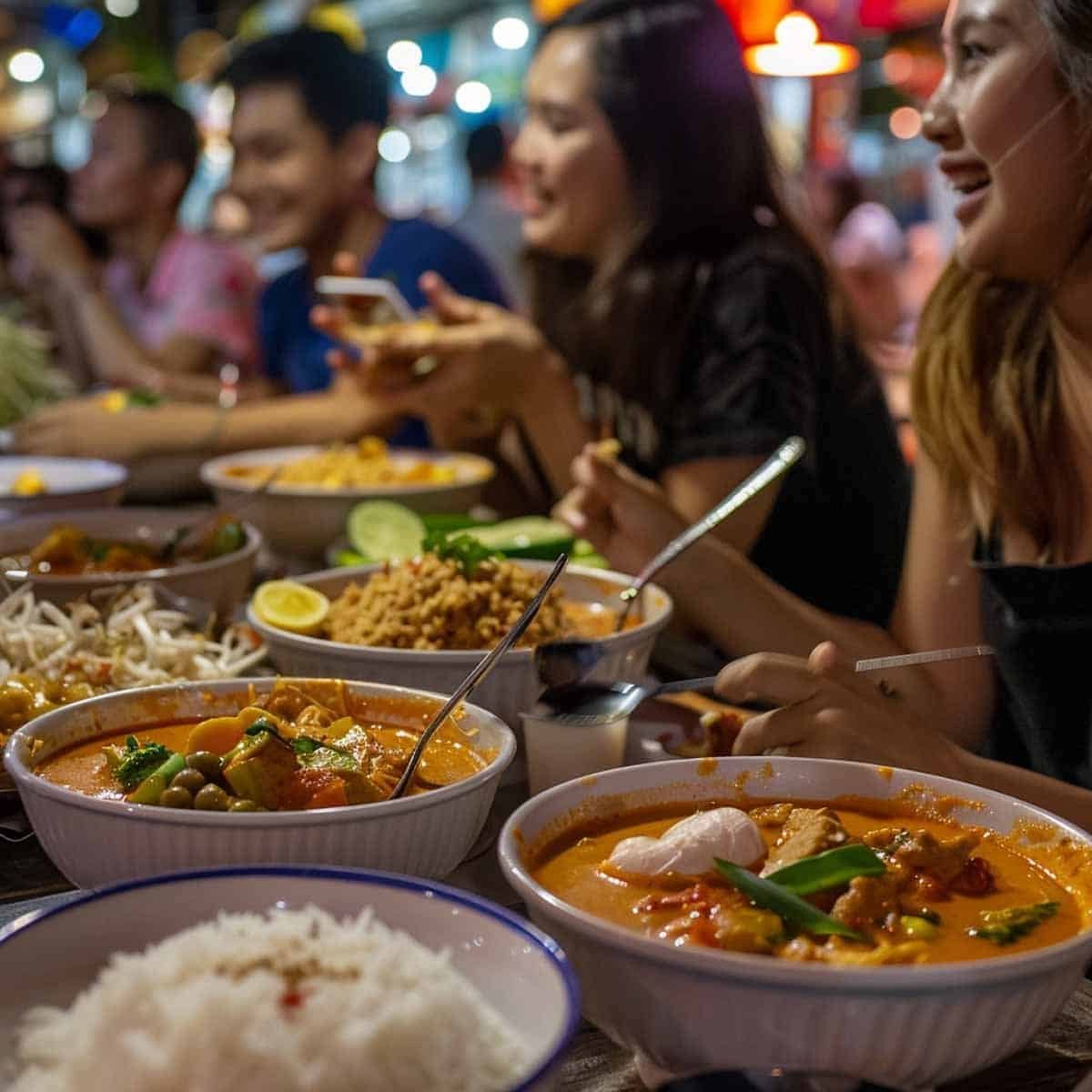


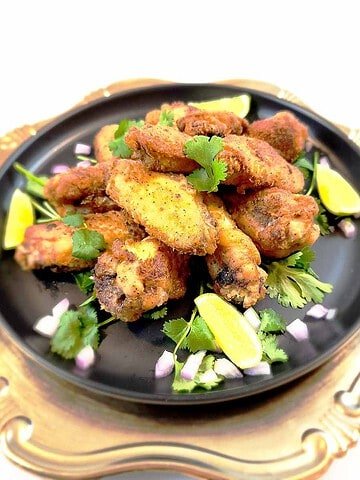
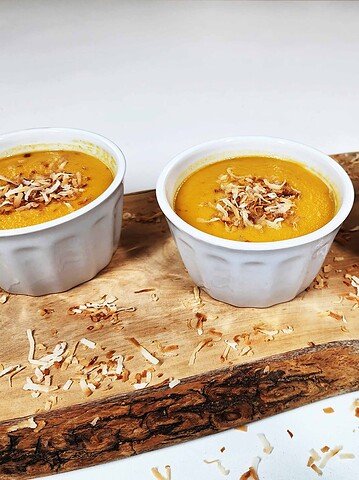
Leave a Reply